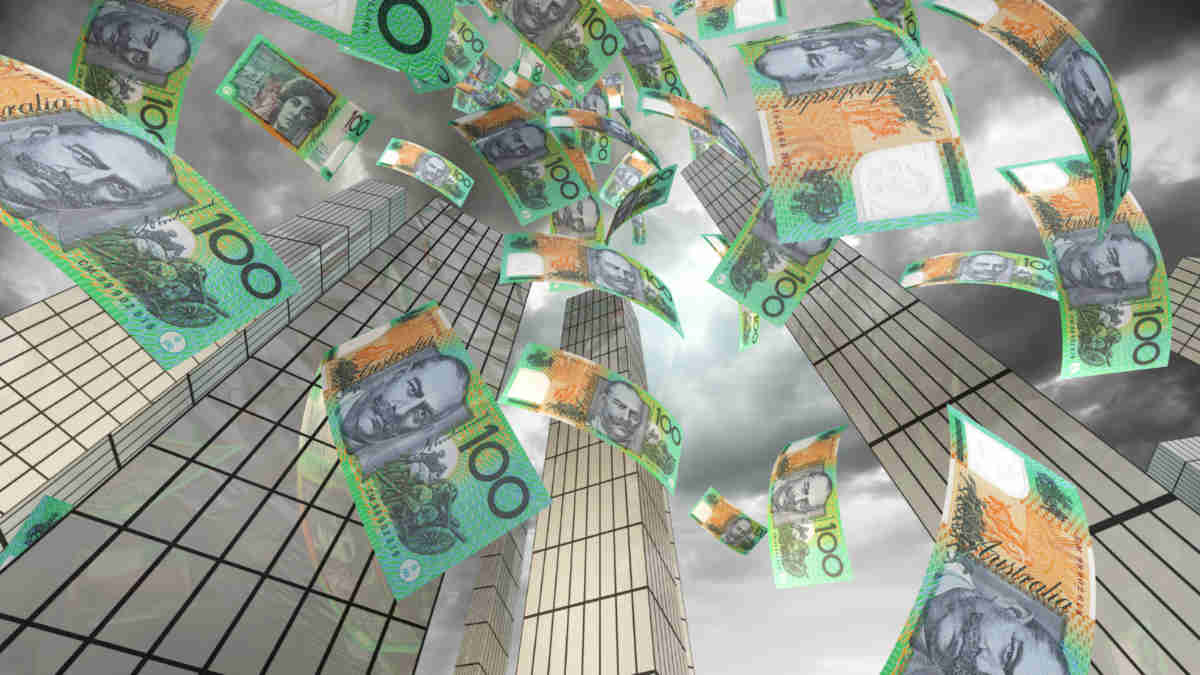Top ASX dividend payers this earnings season, and ways to profit from the ex-div date

Which small caps pay the most dividends, and how to play the ex-div date. Picture Getty
- The key takeaways from this earnings season
- Which small caps pay the most dividends
- Stockhead reached out to expert Adam Dawes to see if there is a way to exploit the ex-dividend date
The half-year earnings season has drawn to a close.
Clearly, inflation was the key theme, but we also heard about rising interest rates, lingering supply-chain issues, and changing consumer behaviour just to name a few talking points from company execs.
In summary, the best word to sum up this earnings season is that it was ‘underwhelming’.
According to Commsec, only 46% of the share prices of ASX 200 companies reporting earnings were higher on the day of earnings release.
Here’s Commsec’s snapshot of 137 companies in the ASX 200 Index during this earnings season:
– 30% fall in profits to $40 billion
– 11% increase in sales
– 15% rise in expenses
– 87% of companies posted profits
– 5% average growth in dividends
Profits were generally lower as expenses outpaced revenues. Only 41% of companies saw their profits rise.
From a total market perspective, consensus EPS (earnings per share) over the next 12 months is expected to hold steady, reflecting robust sales and revenue expectations.
Aggregate cash holdings rose 0.3% to $207 billion. Interestingly, 50% of companies lifted their cash holdings, and 50% reduced cash.
Over 88% of companies issued a dividend. Although dividends per share rose by 5%, in dollar terms they fell 3% reflecting lower payouts by big resource companies.
What did the companies say?
According to Commsec, there were a few major themes this reporting season.
Profit margin was one key theme, as it has come under pressure on the back of soaring operating costs. But many companies (mainly retailers) are also reporting that input costs and overall cost pressures may have peaked.
Some companies like Accent Group (ASX:AX1) are reporting that their segments are holding up; for instance, footwear for younger Aussies not burdened by mortgage debts.
Banks are experiencing some margin pressures amid a slowing housing market, as cited by Bendigo & Adelaide Bank (ASX:BEN).
Insurance, Consumer Staples and Health Care stocks have been the best sectoral performers this reporting season, with Banks the biggest drag on the benchmark index.
Companies have also preferred to use share buybacks rather than lift dividend ratios in an environment where borrowing costs are increasing – as evidenced by Cochlear (ASX:COH) and Qantas (ASX:QAN).
Outlook
The reporting season is not just a backward-looking event, but also a time when companies outline what lies ahead.
According to Commsec, the next six months looks to be equally challenging, judging by comments made by companies.
For one, more rate hikes lie ahead and Commonwealth Bank economists are expecting another 25bp rate hike in April.
In terms of consumer behaviour, Aussies are buying up more home brands at supermarkets and cheaper cuts of meat. Consumers are expected to spend more time at home, rather than going out for dinner.
But there are exceptions. For example, Endeavour Group (ASX:EDV) noted softer sales from packaged liquor at its Dan Murphy and BWS stores, but more spending at its hotels. According to Endeavour, “sociability is absolutely recession-proof” after Covid-19 lockdowns.
A number of companies also said they are expecting benefits from higher migration that should happen later this year, including Medibank (ASX:MPL), Stockland (ASX:SGP), and IDP Education (ASX:IEL).
Other companies like JB Hi-Fi (ASX:JBH) and Ansell (ASX:ANN) said they have already noted some easing in price pressures.
Major resources companies are also putting their faith in a China revival, such as BHP, Rio Tinto, Alumina and Fortescue.
While BHP Group (ASX:BHP) and Rio Tinto (ASX:RIO) each blamed rising costs and have trimmed their respective interim dividends, Santos (ASX:STO) increased its dividend payment by 78%.
TOP ASX LARGE CAP DIVIDEND PAYERS:
| Code | Name | Sector | Div yield | Current Div |
|---|---|---|---|---|
| YAL | Yancoal | Energy | 15.60% | $0.53 |
| FMG | Fortescue Metals | Materials | 11.10% | $0.75 |
| WDS | Woodside Energy | Energy | 10.80% | $2.11 |
| WHC | Whitehaven Coal | Energy | 8.40% | $0.32 |
| BHP | BHP | Materials | 7.70% | $2.55 |
| IPL | Incitec Pivot | Materials | 7.20% | $0.17 |
| SGP | Stockland | Real estate | 6.90% | $0.12 |
| ANZ | ANZ Bank | Financials | 6.20% | $0.74 |
| ALD | Ampol | Energy | 6.20% | $1.55 |
| DXS | Dexus | Real estate | 6.20% | $0.28 |
| BEN | Bendigo & Adelaide | Financials | 5.90% | $0.29 |
| WBC | Westpac Bank | Financials | 5.80% | $0.64 |
| S32 | South32 | Materials | 5.70% | $0.25 |
| AZJ | Aurizon | Industrials | 5.60% | $0.07 |
| NAB | National Australia Bank | Financials | 5.50% | $0.78 |
Can we trade ex-dividend date to our advantage?
Some Stockhead readers have asked if there is a way for investors to exploit ex-dividend dates. In other words, buying shares before or after ex-dividend date.
To answer that question, we’ve reached out to Adam Dawes, a senior investment adviser at Shaw and Partners.
Dawes explained there are a few things an investor can do to trade the ex-dividend date.
“Today (Wednesday) is a great example of buying a stock after it goes ex-div, “Dawes told Stockhead.
“WDS has gone ex-div today paying out $2.11 plus 100% franking. If all things being equal, the stock should fall by the dividend amount as investors that hold the stock before the ex-date get the dividends paid out.”
(WDS paid a final dividend of $2.11 this half, and $1.60 interim dividend six months ago, taking its full dividend to $3.71 for the year).
“(So) buy a stock after the ex-dividend date, when the stock price may have declined due to the dividend payout, and then hold it for the long term,” he added.
“This strategy can be attractive to investors who are more interested in the potential long-term growth of the stock than in the immediate dividend payout.”
What about buying before the ex-dividend date?
“Another way is of course to buy a stock before the ex-dividend date, hold it long enough to receive the dividend, and then sell it,” said Dawes.
This strategy is called Dividend Stripping, and is seen as a tax avoidance scheme by the Tax Office, which has now introduced the 45-Day tax rule.
“There are lots of rules around this and investors should seek professional help,” said Dawes.
“One rule is that you must hold the stock for 45 days to get the franking credits. This strategy can be attractive to investors who are looking for a short-term gain from the dividend payout.”
Here’s a rundown of the top 15 small caps that paid dividends:
TOP ASX SMALL CAPS DIVIDEND PAYERS
| Code | Name | Sector | Div Yield | Current Div | MarketCap |
|---|---|---|---|---|---|
| MFB | My Food Bag Group | Staples | 27.70% | $0.03 | $57m |
| FEX | Fenix Resources | Materials | 20.60% | $0.05 | $146m |
| SDG | Sunland Group | Real Estate | 20.10% | $0.40 | $182m |
| EPY | Earlypay | Financials | 16.00% | $0.02 | $58m |
| PCG | Pengana Capital | Financials | 14.50% | $0.02 | $151m |
| IMA | Image Resources | Materials | 14.30% | $0.02 | $151m |
| ADA | Adacel Technologies | Technology | 14.10% | $0.02 | $48m |
| BSE | Base Resources | Materials | 14.10% | $0.03 | $283m |
| HZN | Horizon Oil | Energy | 12.50% | $0.01 | $272m |
| BST | Best & Less Group | Discretionary | 11.90% | $0.12 | $241m |
| RCT | Reef Casino | Discretionary | 11.80% | $0.23 | $148m |
| MTO | MotorCycle Holdings | Discretionary | 11.80% | $0.08 | $125m |
| AMO | Ambertech | Technology | 11.10% | $0.01 | $25m |
| DSK | Dusk Group | Discretionary | 10.70% | $0.10 | $106m |
| TWR | Tower Ltd | Financials | 10.00% | $0.03 | $224m |
With the current inflation rate of 7.4%, some traders are looking into the smaller cap names to find that extra yield pickup.
A higher dividend yield however doesn’t automatically translate to great companies. Yields could be high due to several factors, including a depressed share price.
Companies could also pay high dividends because they’re not seeing much opportunity to grow right now, and this can be a sign that dividend payments could be cut in the future.
Related Topics
UNLOCK INSIGHTS
Discover the untold stories of emerging ASX stocks.
Daily news and expert analysis, it's free to subscribe.
By proceeding, you confirm you understand that we handle personal information in accordance with our Privacy Policy.








